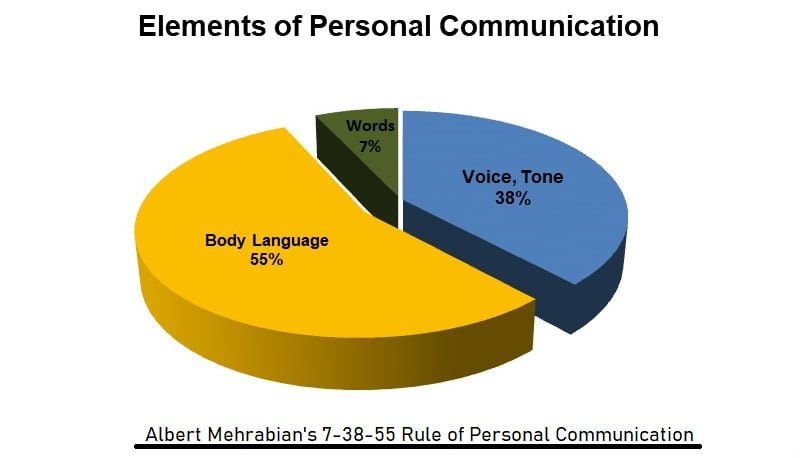Body Language Do’s and Don’ts in a Job Interview
Knowing body language do’s and don’ts might be very beneficial in a job interview. Job Interview is always challenging and a headache for applicants looking for a job. Correct body language in an interview is vital for candidates to appear charming and proficient. However, it’s not an easy task. But in addition to professional qualifications, the personal impression is the most important prerequisite for employment.
Usually, everyone comes to an interview with an appropriate outfit, i.e. clean clothes, polished shoes, and fresh cutting. This is not only part of good manners – above all, it serves to make a good impression. It is the same with body language. Occasionally, after an interview or assessment center, an actual top candidate can turn into a shaky candidate. But;
Why is that so?

Body language lays the foundation for what the observer receives. “When someone says that they think the company is great or that what they have done has always gone really well and they cross their arms and look down, then they get the feeling that they are not telling the whole truth.” You can underline or refute what you say through body language.
Besides the Job Interview, Body language has a unique importance in communication in our day-to-day lives. Here’s the Importance of Body Language in Communication.
Below are the 3 rules for Body Language in a job interview:
Rule 1: Be Yourself:
Of course, you should pay attention to your behavior and attitude during the selection process in order to avoid gross mistakes and to present yourself from your best side. But try not to act or even to rehearse fixed sequences of movements. This rarely works and only reduces your ability to concentrate on the conversation or upcoming tasks. Small inconsistencies in body language also make you seem unpredictable.
In a job interview, it is acceptable to adjust the performance of the industry and the company a little. For example in terms of looseness; it seems rather strange when you as an applicant sit rigidly while your interviewers are rather casual. However, you shouldn’t force yourself: Because personal sympathies sometimes don’t work for experienced HR professionals. According to an HR expert, “I always put on company glasses, so to speak. I can’t hire a person because I like them. This person has to fit into the company in which they will work.”
Rule 2: Train for an Emergency:
Your self-confidence and self-esteem are your strength during an interview. You can be more confident in certain situations if you’ve played through them before. Use this advantage and practice job interviews, group discussions, or self-presentations at home. Get the help of friends for this. They can give you feedback on where your body language doesn’t suit you and what you actually want to express. If something looks fake, hectic, or just weird, then it is noticeable; and also when you act out poses from a textbook.
Be your own boss and only prefer what suits your personality. “Of course, you can learn to represent yourself with little effort and learning. But what you should pay attention to is that it also suits you. When it says, for example, that you have to have your arms at a certain height, you should first see whether that is correct or whether no other variant is more comfortable for your own body.”
Rule 3: You will not be Eaten:
Despite all the uncertainty, you shouldn’t forget that a certain amount of nervousness is allowed, especially for young professionals. In fact, it is more in the interest of HR managers to defuse stressful situations rather than putting applicants under additional pressure.
It is important for HR managers: not to get to know the applicant in an exceptional situation but in an everyday situation. “You have to allow yourself a certain nervousness and uneasiness, that’s just normal. They try to convey that that’s okay and that you can act just like in everyday life. Here are the 10 Body Language Tips for Video Conferencing on Zoom or Skype.
Pie Diagram on Body Language in Nonverbal Communication:

Body language in the Interview: Do’s and Don’ts
In the interview, you can use your body language to send signals and messages either positive or negative. We have summarized the do’s and don’ts here below:
Do’s:
- Make sure to always keep eye contact with everyone involved (Chairmen, Secretary, Psychiatrist, or the Staff).
- React to what the other person says. So the other person can see that you are listening well.
- Your answer must be short but precise and to the point.
- Only answer what is asked. There’s no need to go into details if not required. The more you go in-depth the more you will be judged.
- Show that you take it seriously and that you are good at dealing with other people.
- Smile every now and then inappropriate place, it loosens up both yourself and the situation.
- Sit upright in a comfortable position. Cramped sitting increases your feeling of stress. So it is better to change your posture from time to time.
- Take enough pauses in conversation to get your mind sorted.
- Keep a reasonable distance from your counterpart; otherwise, you could seem too pushy.
- Don’t forget to breathe!
- Place your hands softly on your thighs and gesture in moderation.
- Pay attention to your speaking speed and volume. If you speak in a comfortable, powerful tone, the other person will be happy to listen to you.
- Be awake and show enthusiasm. Be firm and confident: not only with the help of your body language but also with your voice. Speak dynamically and emphatically; neither too hectic nor lethargic.

Don’ts:
- The initial handshake shouldn’t be too lax or too tight.
- If you always look down, you look ashamed, if you just look at the wall, it makes a defiant impression.
- Do not turn away from the person you are talking to during the interview. This is interpreted as ignorance or thoughts of flight.
- If you slump into your crooked armrest and clench your hands, it signals fear and a lack of self-control.
- Leaning on the table, possibly still in the “area” of the other person, is not advisable.
- Avoid sitting on the edge of the chair or sinking into the chair.
- Crossing your hands or arms is equated with defense and self-protection.
- Stress gestures such as B. gesticulating or brushing back hair constantly suggest a lack of self-confidence.
- Fiddling with your fingers nervously or playing with an object is no more advisable than clenching your fists aggressively.
- Sending sexual stimuli, e.g. Women with a little girl pattern (big eyes, tilting head) or men with legs that are wide apart, is generally offensive and taboo.
You might also like:
Body Language Secrets of Successful People:
Secret Body Language Signals in a Romantic Relationship:
Body Language | 29 Powerful Tips For Personality Development
